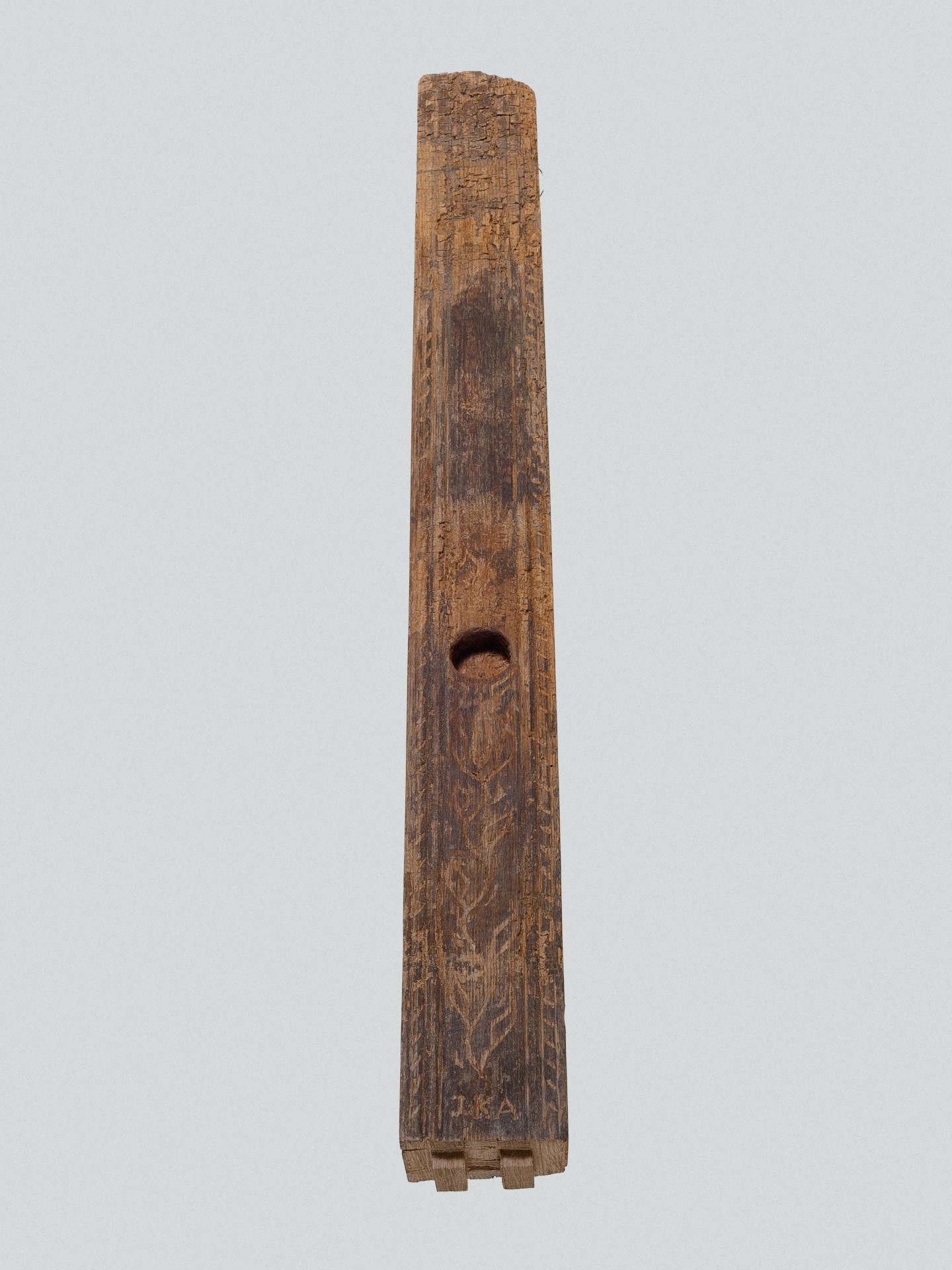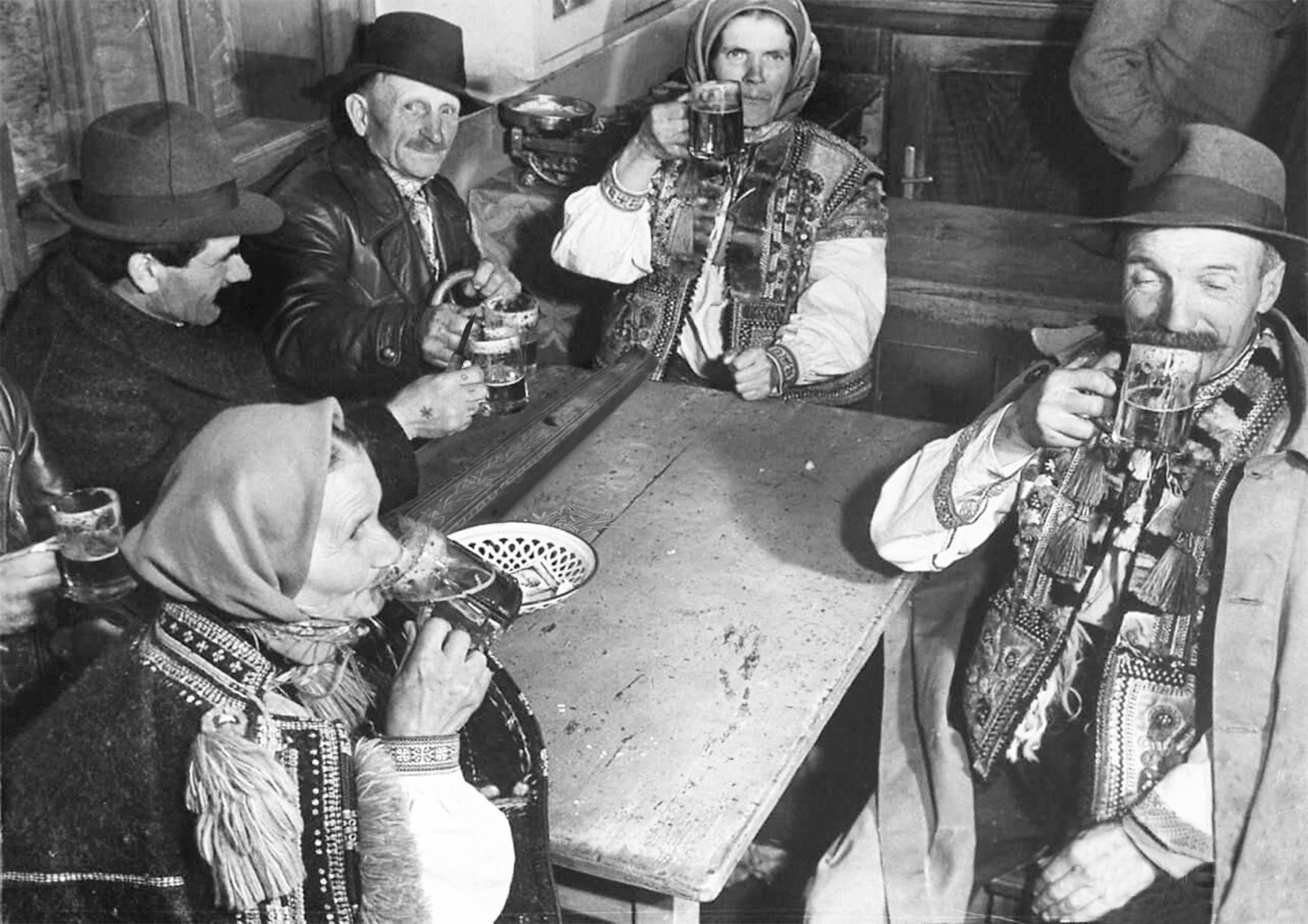*"I have often heard from my maternal uncle that they used to pass through Bucsa, especially in the long winter evenings, or perhaps after the cattle had been fed, in the afternoons." ... "As bachelors at the time, they had little money in the 1840s. Somehow they found a way, while their parents were wintering in the house in the town, to scavenge the leftover crops by 'helping' the mice to drill the attic where the crops were stored. They "liquefied" it by bagging it. Either using the product or its price as a means of payment to pass the time in the pub in Bucsa, to add colour to their monotonous farm life."*
In the countryside, it was common practice to pay for a drink with the product or its price, but it was important that this activity was not revealed to the farmer's relatives: '... the innkeeper accepted the product as payment, and was an accomplice of the farmer's son if he stole it from his father because he wanted to have fun...'. This was done by means of the chidder.
chidder: a word originates from the old Hungarian word, cseber (cheber), from the county of Arad. The word was formed by the use of a b-d sound-unbundle (b-d bundle-unbundle sound-pair). The noun cseber is a wooden equipment, usually open at the top, for collecting the cut bunches during the harvest and carrying them to the place where they will be processed or transported. The chidder is a simple folk object carved from the side boards of the cheber. It is usually found in taverns. It is most often made out of oak, and was used as a night-time entertainment tool, mainly for young people who paid for their drinks with product or the money they earned from selling it. When the payment was settled, the barman would simply say to his customer: 'To the hoist!' (in Hungarian translation: ’Pull it!’). The barman then pulled out the chidder which was hidden under the bar. Then he placed the drink and the bachelors downed it as quickly as possible so they won’t get caught by their relatives. This object later became a cult object: the tradition was passed down from father to son, and the mystique of the chidder got lost. The chidder was decorated with various folk motivs, a hole was drilled in the end and was hung on the wall of the pub with a rope or string, thus commemorating generations. The initials of the makers name were often written in the chidder marking the year and therefore, the generations. The noun of the chidder comes from it’s use, the quick gesture and the expressions of 'drinks on the pull' and 'under the bar' associated with it.
chidderpuller: noun, a nickname, usually applied to a man or young man who pulls the chidder in a pub instead of paying.
*„Hallottam anyai nagybátyámtól, hogy át-átjártak Bucsára, különösen a hosszú téli estéken, vagy talán már a jószágok ellátása után, a délutáni órákban. \[...] Mint legényemberek annak idején pénzt nemigen kaptak kézhez az 1840-es években. Valahogy módját ejtették, hogy míg a szülők a városi házban teleltek, ők a kintmaradt terményt dézsmálták olyanformán, hogy «segítettek» az egereknek megfúrni a padlást, ahol a terményt tárolták. Azt szépen zsákbaszedve «cseppfolyósították». Vagy a terményt, vagy az árát használva fizetőeszközül, hogy a bucsai kocsmában kicsit múlassák az időt, színesítsék az egyhangú tanyasi életet.”* (Revákné Ökrös Mária)
Vidéken bevett szokás volt tehát terménnyel, vagy annak az árával fizetni egy-egy italért, de fontos volt, hogy ez a tevékenység ne derüljön ki a legény hozzátartozói számára. A kocsmáros elfogadta a terményt fizetségként, és cinkosa volt a parasztlegénynek, ha azt az apjától lopkodta, mert mulatni akart. Ennek eszközeként szolgált a cséder.
A cséder a régi Arad megyei *cseber* szóból ered, zöngétlenedéssel jött létre (*b-d* zöngés-zöngétlen hangpárok). A *cseber* főnév a szüret során a levágott fürtök összegyűjtését és azoknak a feldolgozás vagy szállítás helyére hordását szolgáló, általában felül nyitott, többnyire dongás faeszköz. A cséder a cseber oldaldeszkáiból faragott, többnyire kocsmákban található egyszerű népi tárgy. A leggyakrabban tölgyfából készült eszköz az éjszakai mulatást segítette főként azon fiatalok számára, akik terménnyel vagy az abból származó pénzzel fizettek az ita-
lukért. Amikor a fizetés rendeződött, a kocsmáros csak annyit mondott vendégének: *„Húzóra!”*. Ekkor a legény kihúzta a pult alá rejtett csédert, amibe a csapos elhelyezte az italát, majd azt minél gyorsabban lehörpintette, nehogy hozzátartozói rajtakapják tettén. A cséder később kultikus tárggyá alakult: a hagyomány apáról fiúra szállt, a tárgy elvesztette a körülötte kialakult sejtelmességet.
A csédereket különböző népi motívumokkal díszítették, lyukat fúrtak a végébe és egy kötél vagy madzag segítségével fellógatták a kocsma falára, ezzel emléket állítva a generációknak. Gyakran évszámot, vagy a készítő nevének kezdőbetűit is belevésték. A tárgy használatából adódó gyors mozdulatból és a hozzá tartozó felkiáltásból erednek a húzóra iszik és a pult alól kifejezéseink.
A cséderhúzó gúnynév, általában arra a férfira vagy fiatalemberre mondják, aki a kocsmában fizetés helyett csédert húz.


